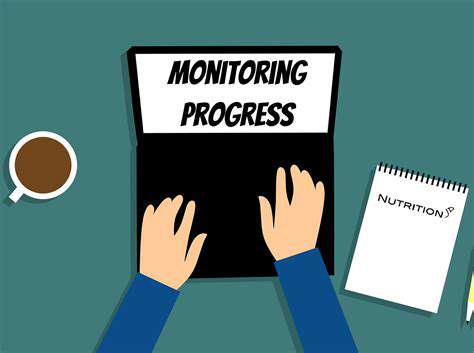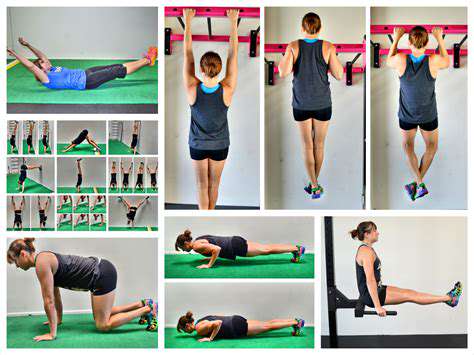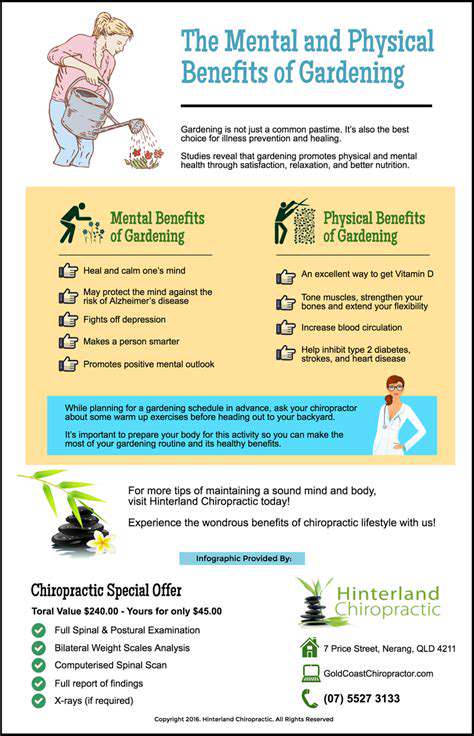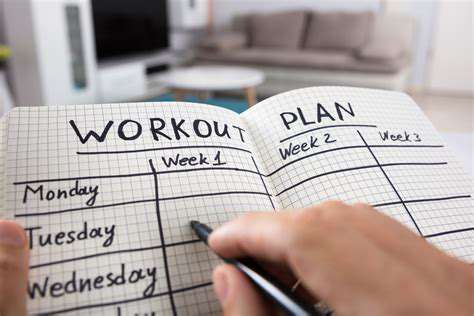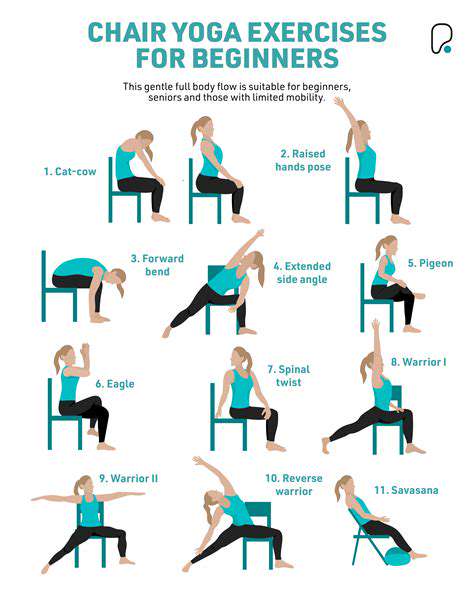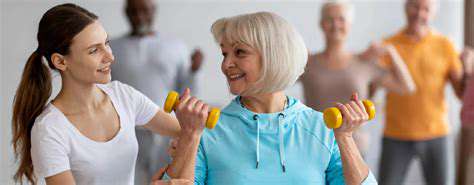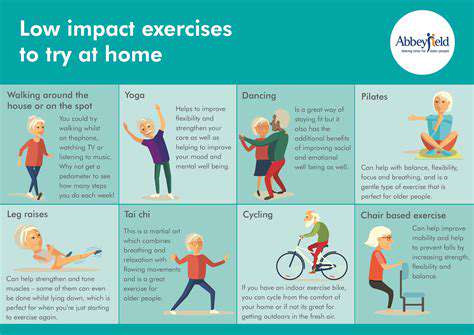The Importance of Rehab Exercises for Seniors with Walkers
Why Rehab Exercises are Crucial for Seniors with Walkers
Strengthening Muscles for Stability
Rehab exercises are crucial for seniors using walkers because they directly target the muscles responsible for balance and stability. These exercises, often focused on core strength, leg muscles, and hip flexors, help seniors regain strength and control. Improved muscle strength translates to greater confidence and independence in their daily activities, allowing them to navigate their environment with more ease and less risk of falls. Strengthening these muscle groups is fundamental to reducing reliance on walkers in the long term.
Exercises such as leg raises, glute bridges, and wall sits, when performed correctly and consistently, can significantly improve muscle tone and endurance. This increased strength provides a solid foundation for the stability needed when walking, reducing the risk of falls and injuries.
Improving Balance and Coordination
Maintaining balance is paramount for seniors, especially those using walkers. Rehab exercises specifically designed to enhance balance and coordination help seniors regain their equilibrium. Activities like heel-toe walking, standing on one leg (with support initially), and chair stands challenge the body to maintain balance while improving proprioception, the body's awareness of its position in space. Improved balance directly correlates with a reduction in the risk of falls, a common concern for seniors using walkers.
Enhancing Mobility and Range of Motion
Many seniors using walkers experience limited mobility and range of motion due to age-related physical changes. Rehab exercises, including gentle stretching and range-of-motion exercises, help to improve flexibility and joint mobility. This is vital for preventing stiffness and pain, which can further limit movement and independence. Increased range of motion enables seniors to perform everyday tasks more easily, such as getting in and out of chairs, reaching for objects, and navigating stairs.
Preventing Muscle Atrophy and Weakness
Inactivity, a common consequence of using a walker, can lead to muscle atrophy and weakness. Rehab exercises counter this process by stimulating muscle growth and maintenance. Targeted exercises, such as resistance band workouts and light weightlifting, can help seniors maintain muscle mass and strength, preventing the decline associated with reduced physical activity. This proactive approach to muscle health contributes significantly to overall well-being and reduces the need for more extensive interventions in the future.
Reducing Risk of Falls and Injuries
Falls are a significant concern for seniors using walkers. Rehab exercises directly address this by improving balance, strength, and coordination. Exercises that simulate real-world movements, such as stepping over obstacles or navigating uneven surfaces (with supervision), help seniors develop the necessary skills to react safely to unexpected situations. This proactive approach to fall prevention is a key component of long-term safety and independence.
Managing Chronic Conditions
Many seniors using walkers may have underlying chronic conditions, such as arthritis or osteoporosis, that contribute to their mobility limitations. Rehab exercises can play a vital role in managing these conditions. Exercises tailored to specific needs and limitations can help reduce pain, improve joint function, and maintain bone density. This approach not only enhances mobility but also improves overall quality of life for seniors.
Promoting Mental Well-being
Rehab exercises aren't just about physical improvements; they also contribute significantly to mental well-being. Engaging in regular physical activity boosts mood, reduces stress, and improves sleep quality. The sense of accomplishment and independence gained through progress in exercises can have a profound positive impact on self-esteem and overall mental health. This holistic approach to rehabilitation is essential for the well-being of seniors using walkers.
Strengthening Core Muscles for Enhanced Stability
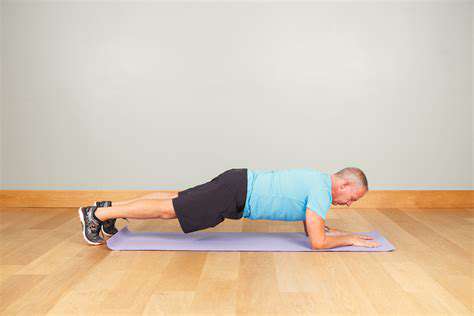
Strengthening Core Muscles for Enhanced Stability and Performance
Core strength is crucial for overall physical well-being, impacting everything from posture and balance to athletic performance and daily activities. Strengthening your core muscles involves engaging a complex network of muscles in your abdomen, back, and pelvis. This comprehensive approach not only improves stability and posture but also reduces the risk of injuries, particularly in the lower back. Developing a strong core is essential for a healthy and active lifestyle. A strong core acts as a foundation for your entire body, supporting your spine and providing stability during movement. This allows for better control and power output in various activities.
A well-developed core contributes significantly to improved athletic performance. Whether you're a seasoned athlete or just starting a fitness journey, core strength is a critical component for maximizing efficiency and power. Exercises targeting the core muscles can enhance your ability to generate force, maintain balance, and execute movements with greater precision and control. This translates to better performance in sports, from running and jumping to lifting and throwing. By engaging the core muscles effectively, athletes can optimize their movements and achieve peak performance.
Targeted Exercises for Core Strengthening
A variety of exercises can effectively target and strengthen your core muscles. Planks, for example, engage multiple muscle groups in your abdomen, back, and shoulders, promoting stability and endurance. Crunches are another common exercise that directly targets the abdominal muscles. However, remember proper form is crucial for maximizing effectiveness and minimizing risk of injury. Proper form ensures that you are targeting the correct muscles while avoiding strain on your back.
Beyond planks and crunches, consider incorporating other exercises like leg raises, Russian twists, and bicycle crunches. These exercises effectively work different aspects of your core, contributing to overall strength and stability. Paying attention to proper form and controlled movements is essential for preventing injury and maximizing results. Progressive overload is key to continued muscle growth and development. Gradually increasing the intensity and duration of your core exercises will help you achieve optimal results.
Incorporating these diverse exercises into your routine will lead to a well-rounded and effective core strengthening program. Regular practice is key to sustained results. Remember to listen to your body and rest when needed. Consistency is key to seeing progress and maintaining a strong core.
Importance of Core Strength in Daily Activities
Core strength isn't just important for athletic performance; it plays a significant role in enhancing your daily activities. Maintaining a strong core improves posture, which can significantly reduce back pain and stiffness. Improved posture also enhances balance and coordination, making everyday tasks easier and more efficient. Strong core muscles support the spine and pelvis, which is vital for maintaining good posture and reducing the risk of back injuries. A strong core also reduces strain on your lower back, helping to prevent pain and discomfort during activities like lifting, carrying, and bending.
Furthermore, improved core strength contributes to better balance and stability, which is crucial for preventing falls, especially as you age. This improved balance and stability translates to improved performance in everyday activities and reduces the risk of accidents. Strong core muscles are a key component of overall functional fitness, allowing you to perform daily tasks with greater ease and efficiency. This translates to better quality of life and reduced risk of injury.
Improving Leg Strength and Endurance for Better Walking
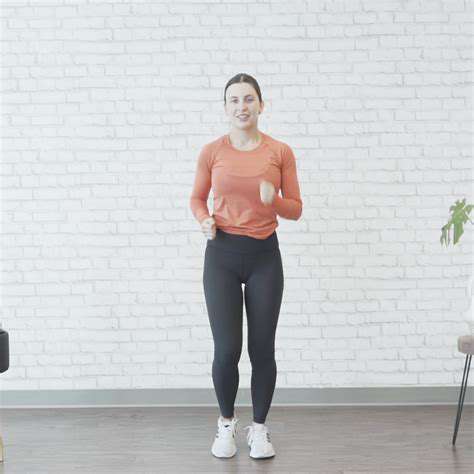
Improving Leg Strength
Building leg strength is crucial for a multitude of reasons, extending far beyond aesthetics. Strong legs provide a solid foundation for everyday activities like walking, climbing stairs, and even carrying groceries. Furthermore, robust leg muscles contribute significantly to overall body stability and balance, decreasing the risk of falls, especially as we age. Engaging in targeted leg exercises strengthens these muscles, making daily tasks easier and more efficient.
A variety of exercises can be incorporated into a routine to improve leg strength. Squats, lunges, and deadlifts are classic examples, each targeting different muscle groups within the legs. Proper form is paramount to avoid injury and maximize results. Consulting a fitness professional can provide personalized guidance on appropriate exercise selection and technique.
Importance of Leg Endurance
Leg endurance, the ability of your leg muscles to sustain work over an extended period, is just as vital as strength. Improved leg endurance allows you to participate in activities like hiking, running, or cycling for longer durations without fatigue. This sustained effort is not only beneficial for athletic pursuits but also for everyday tasks that demand prolonged physical exertion.
Activities like cycling, swimming, and stair climbing, when performed regularly, can significantly enhance leg endurance. The key is consistent training with appropriate rest periods to allow muscles to recover and rebuild. Gradual increases in duration and intensity are crucial for safe and effective progress.
Training Strategies for Leg Strength
Effective leg training involves a structured approach that considers both strength and endurance aspects. A balanced routine should include compound exercises like squats and deadlifts to work multiple muscle groups simultaneously. These compound movements are highly effective for building overall leg strength and power. Incorporating isolation exercises like hamstring curls and calf raises also targets specific muscle groups for more focused strength development.
Progressive overload is essential for continued improvement. Gradually increasing the weight, reps, or sets over time challenges the muscles and stimulates growth and adaptation. Rest and recovery are equally important to allow muscles to repair and rebuild stronger.
Nutrition for Optimal Leg Development
Nutrition plays a critical role in supporting leg strength and endurance gains. A diet rich in protein is essential for muscle repair and growth. Including lean proteins like chicken, fish, and beans in your diet will support muscle development. Furthermore, consuming sufficient carbohydrates provides the energy needed for intense workouts. Proper hydration is also crucial for overall performance and recovery.
Recovery and Injury Prevention
Adequate rest and recovery are vital for allowing muscles to repair and rebuild stronger. Ignoring recovery can lead to overtraining, injury, and decreased performance. Include rest days in your training schedule to allow your muscles to recover effectively. Stretching after workouts is also crucial for improving flexibility and preventing injury.
Proper warm-up before exercise and cool-down afterwards are also key to injury prevention. Listening to your body and taking rest when needed is essential. If you experience any pain, stop the activity and consult a healthcare professional.
Maintaining Balance and Coordination to Reduce Fall Risk
Improving Balance Through Targeted Exercises
Maintaining balance and coordination is crucial for preventing falls, a significant concern for individuals engaging in rehabilitation exercises. Specific exercises targeting these areas can significantly enhance stability and reduce the risk of falls. These exercises often involve working on proprioception, which is the body's awareness of its position in space. Activities like standing on one leg, heel-to-toe walking, and performing chair stands, progressively increasing the difficulty, can greatly improve balance. This targeted approach builds strength in the muscles crucial for maintaining posture and equilibrium, contributing significantly to overall safety and independence.
Regular practice of balance exercises, incorporated into a rehabilitation program, can enhance postural control and reduce the risk of falls. These exercises, when performed correctly and under supervision, can help to improve proprioceptive awareness, which is crucial for maintaining balance in various situations. As individuals progress, exercises can be made more challenging, such as performing balance exercises with eyes closed or while standing on unstable surfaces. This progressive approach gradually strengthens the neuromuscular system, leading to improved balance and reducing the likelihood of falls.
Coordination Training for Enhanced Movement
Coordination, the ability to synchronize different parts of the body for smooth and efficient movements, is another key aspect of fall prevention. Exercises that focus on coordination can enhance an individual's ability to react quickly and adapt to changing environments. Examples include activities like alternating arm and leg movements while walking, reaching for objects at varying heights and distances, and playing simple coordination games. These activities improve the communication between the brain and the body, enabling quicker responses and better control over movements. This enhanced coordination reduces the risk of stumbling or losing balance in everyday activities.
Incorporating coordination exercises into a rehabilitation program can significantly improve an individual's ability to perform daily tasks safely and efficiently. As coordination improves, individuals experience greater confidence and independence in their movements. This translates to a lower risk of falls in various settings, from navigating cluttered rooms to participating in social activities. By practicing these exercises regularly, individuals build a stronger foundation of movement control, reducing the potential for falls and promoting a higher quality of life.
Assessing and Adapting Exercises for Individual Needs
Recognizing that each individual's balance and coordination needs are unique is essential in developing a successful rehabilitation program. A thorough assessment by a qualified professional is crucial to identify specific areas of weakness and tailor exercises accordingly. This personalized approach ensures that exercises are challenging but achievable, preventing frustration and promoting adherence to the program. The assessment should consider factors like age, medical history, current physical condition, and any pre-existing balance issues. This individualized approach maximizes the effectiveness of rehabilitation exercises, enabling safe and effective progress towards improved balance and coordination.
Adapting exercises based on individual progress and limitations is equally important. Regular monitoring and adjustments to the exercise program are necessary to ensure that the exercises remain challenging yet achievable for the individual. This ongoing evaluation allows for progressive increases in difficulty, which further enhances the efficacy of the rehabilitation program. The goal is to continually push the limits while maintaining safety, fostering a sustainable and effective approach to reducing fall risk.
